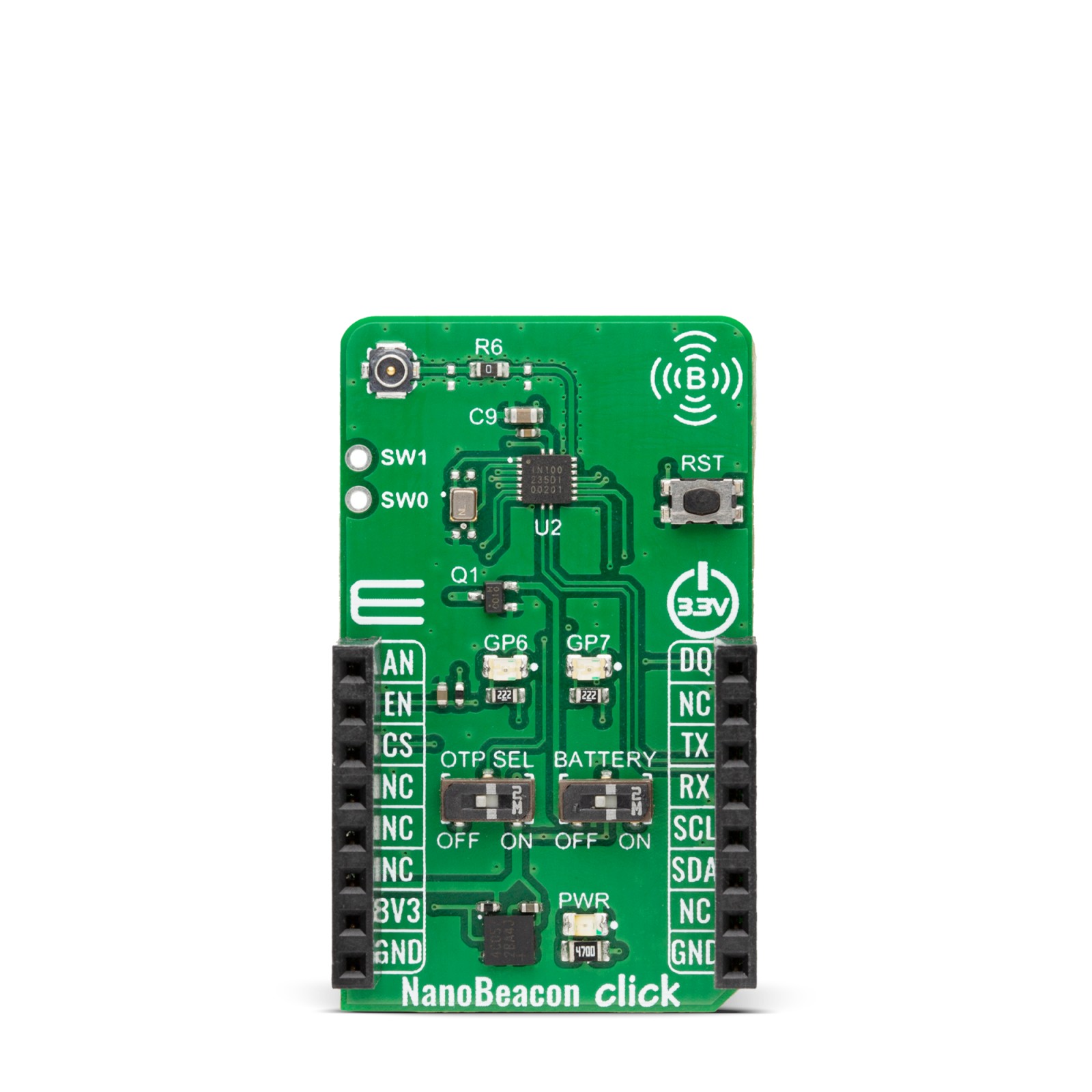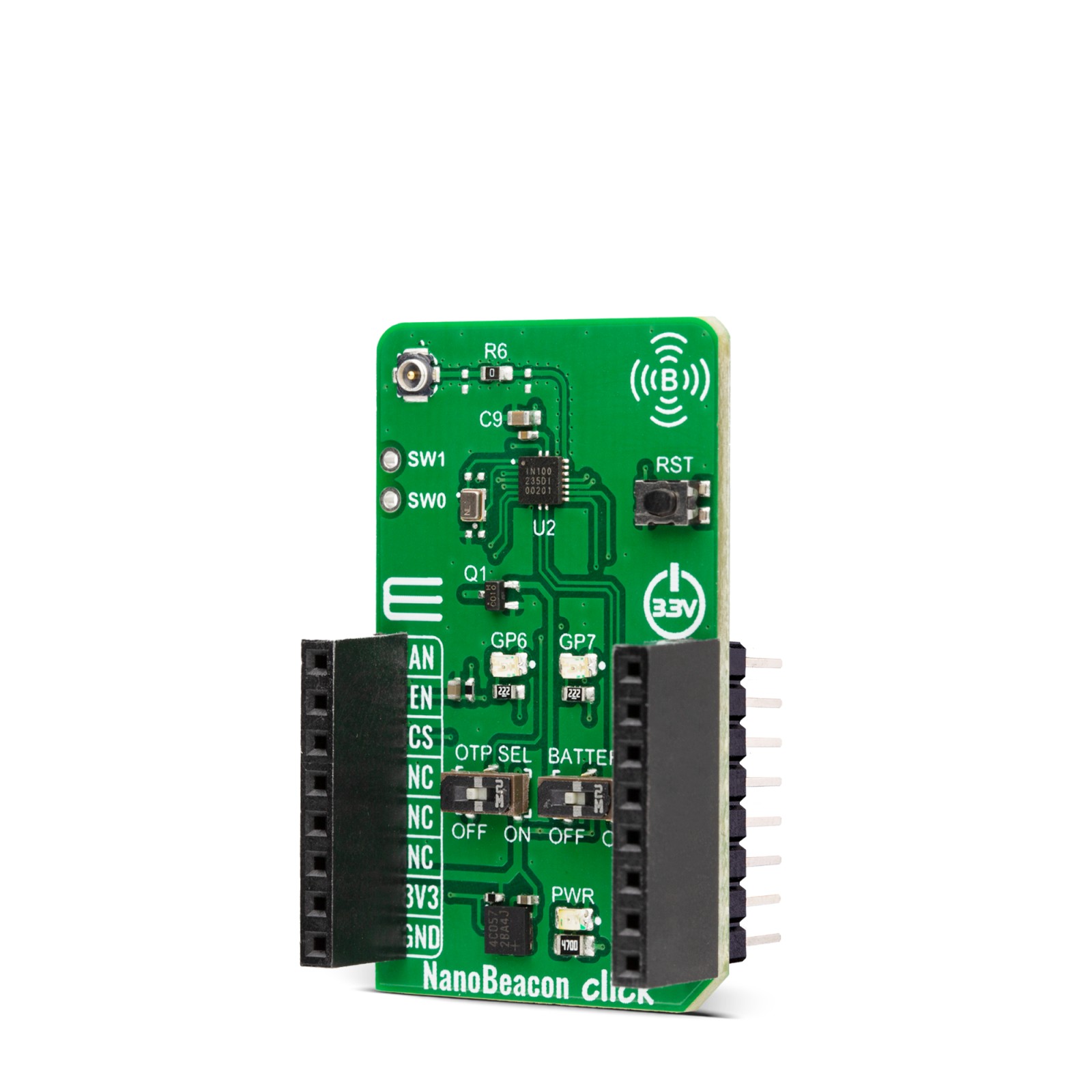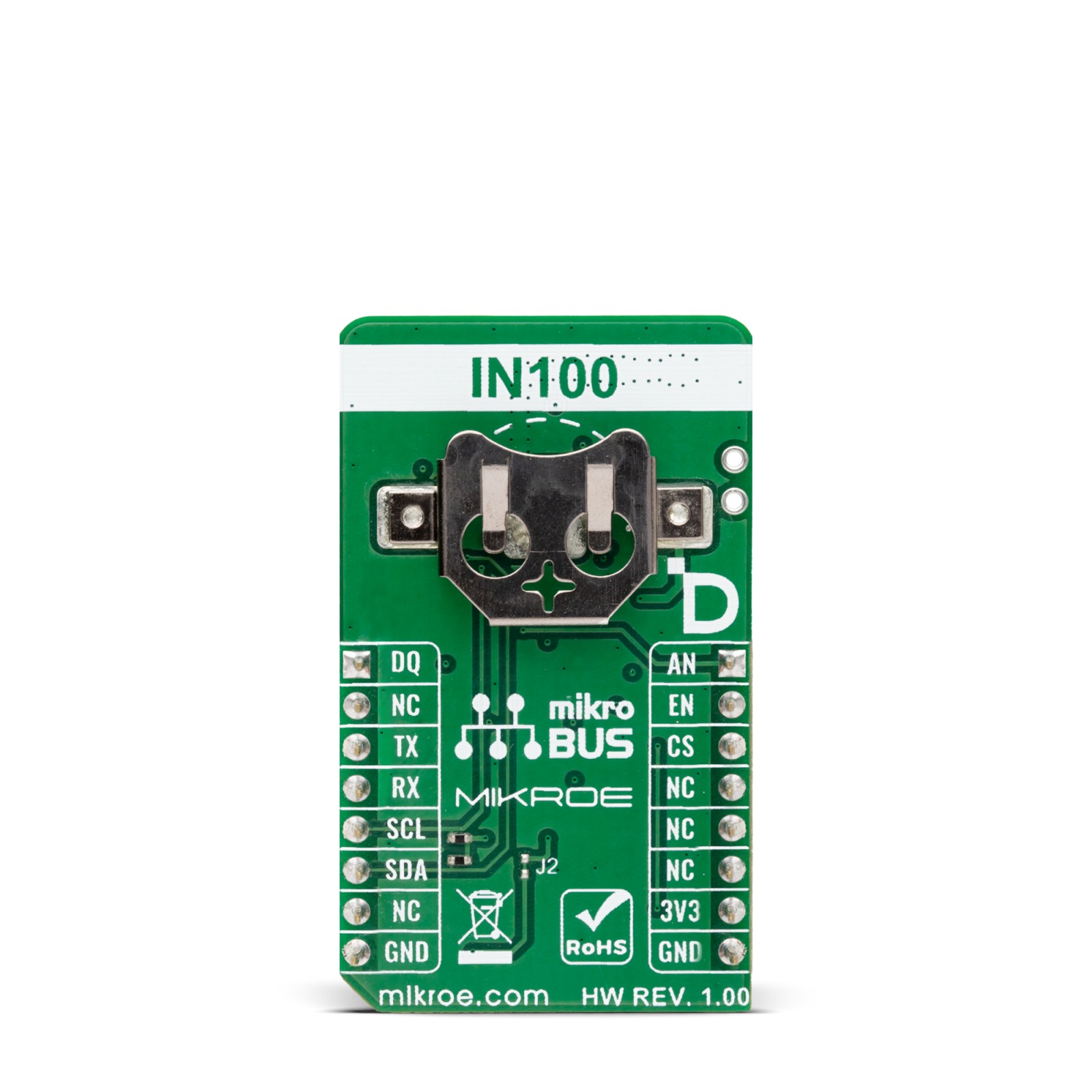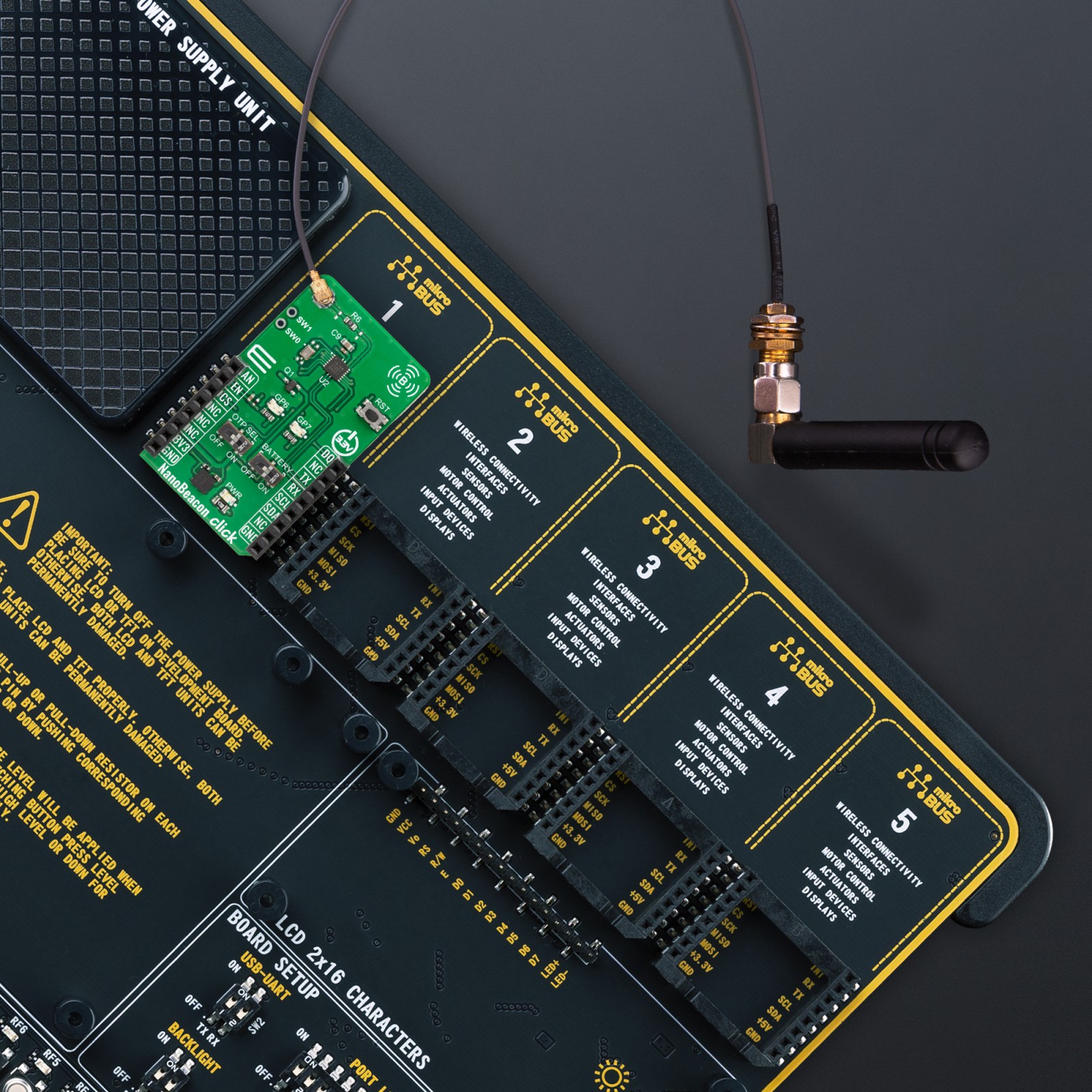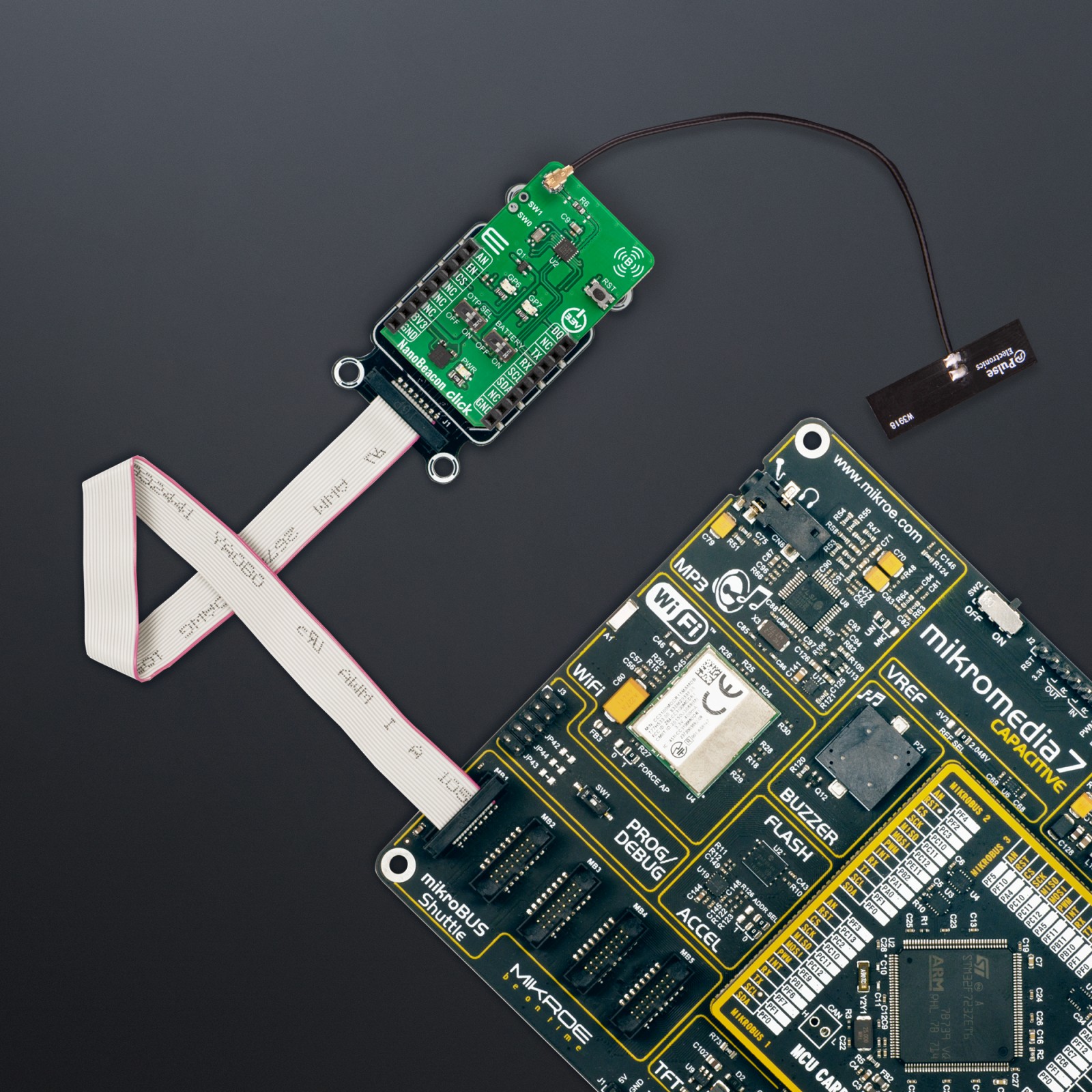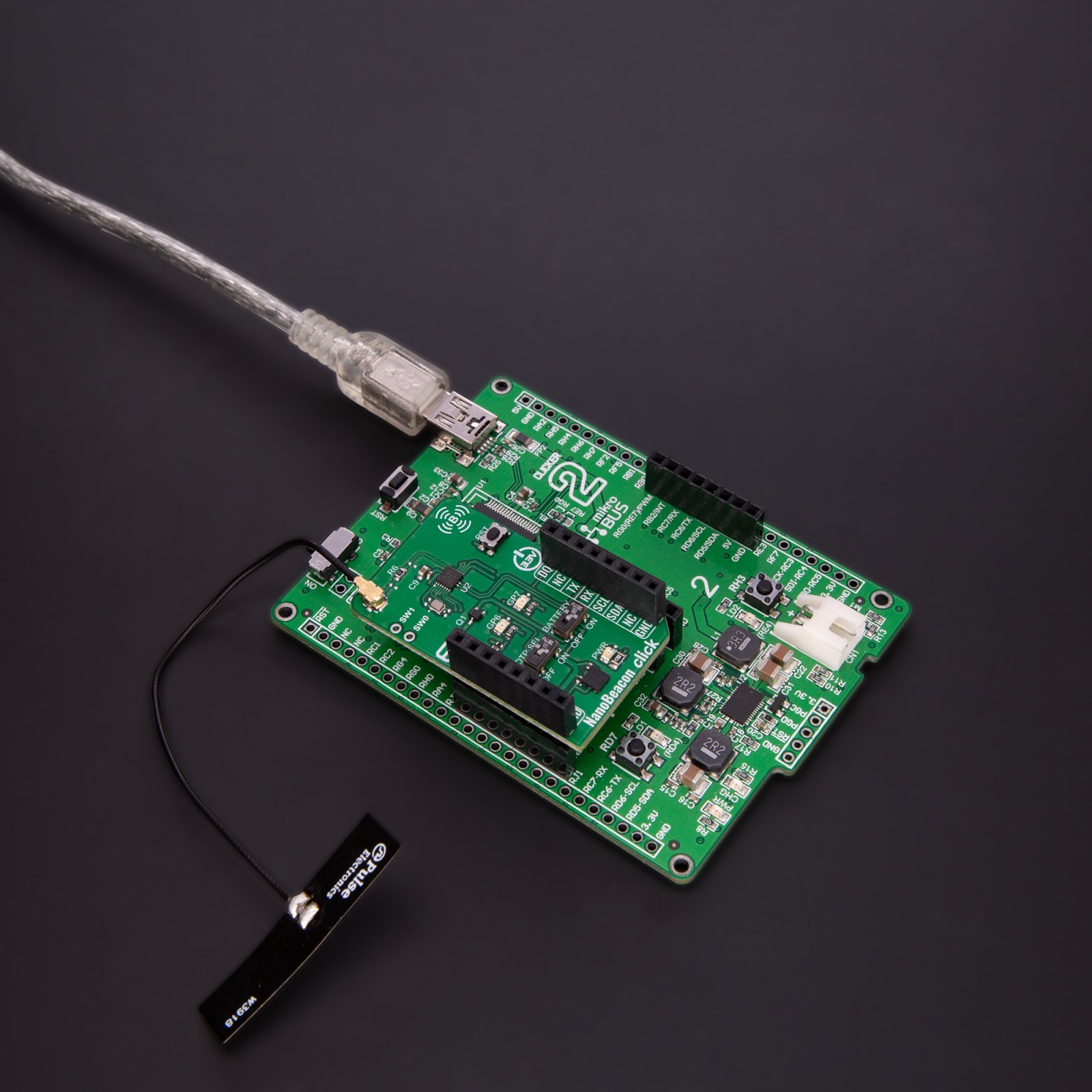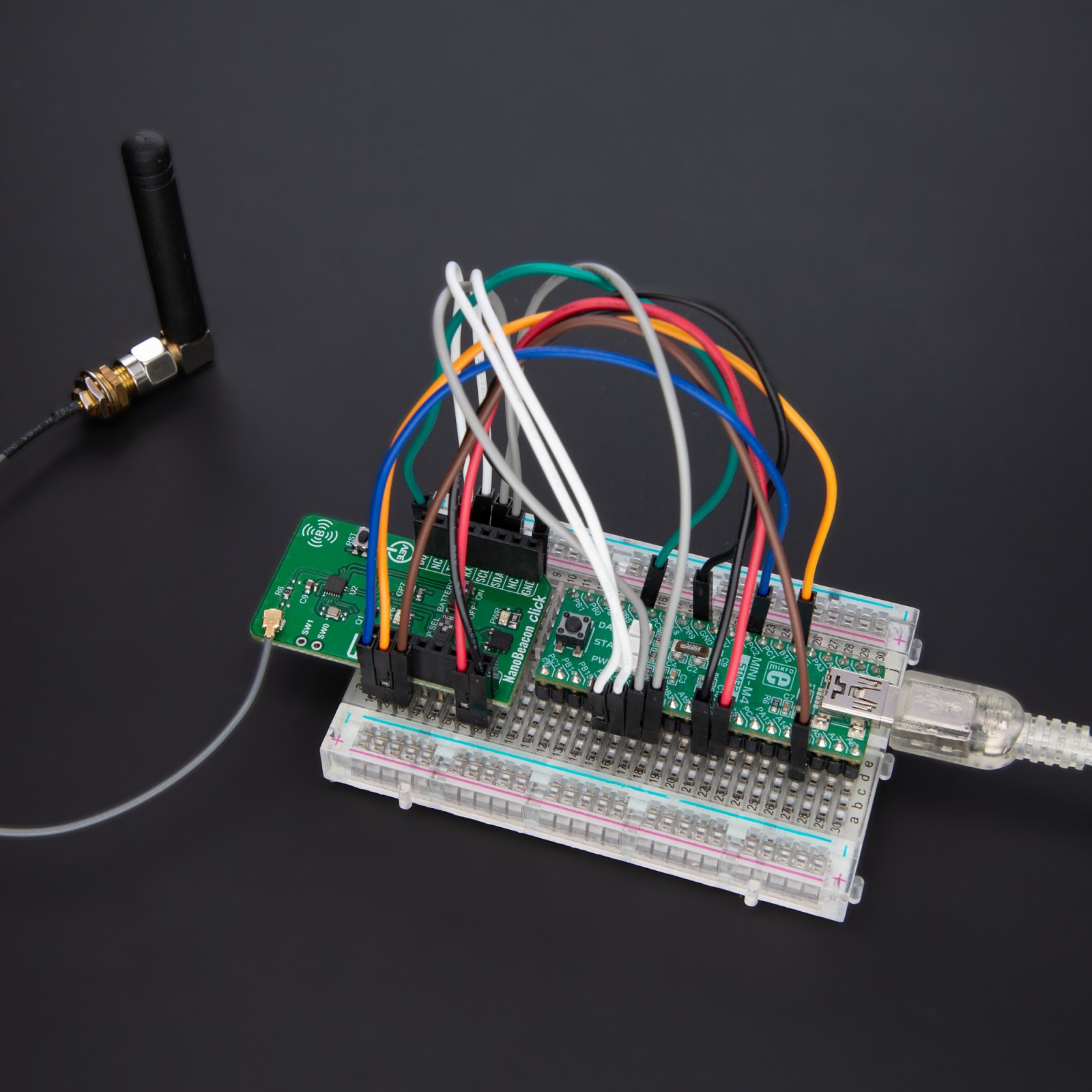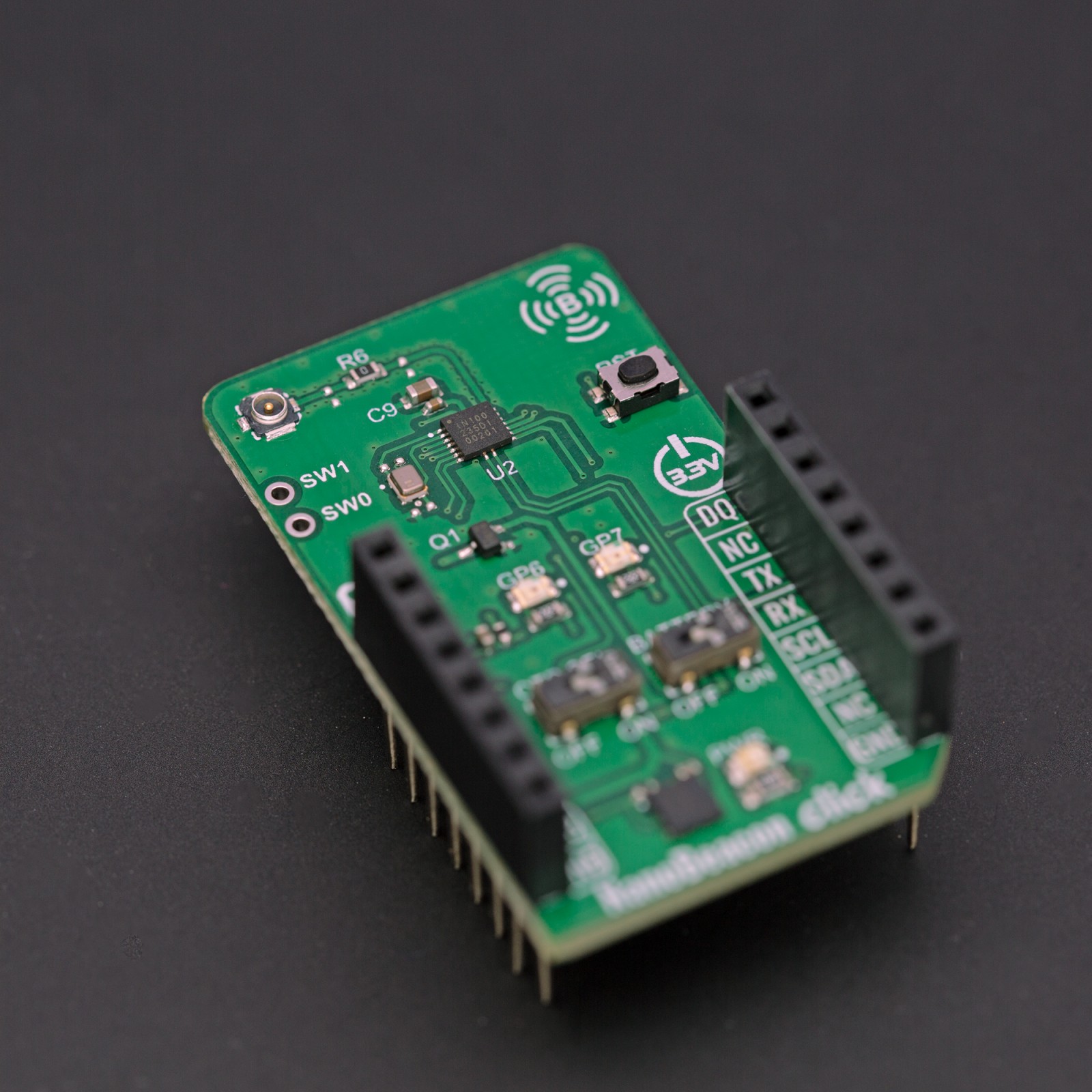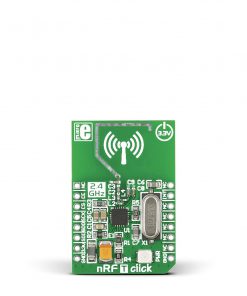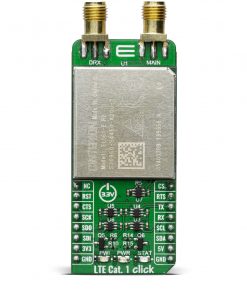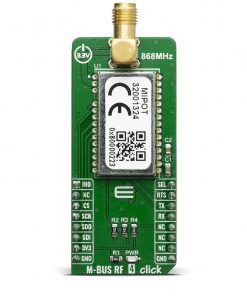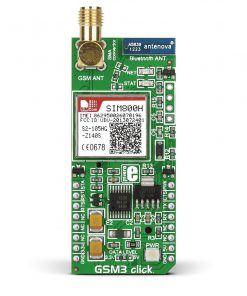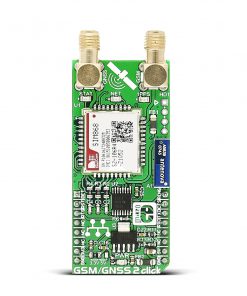NanoBeacon Click
R245.00 ex. VAT
NanoBeacon Click is a compact add-on board that provides a powerful and efficient Bluetooth beacon solution. This board features the IN100, an ultra-low power Bluetooth 5.3 Beacon SoC from InPlay, that sets a new standard in beacon technology. Its ultra-low power consumption, enhanced privacy mode, and three beacon modes offer seamless compatibility with no Bluetooth programming required – plug and play. Its compact design houses two types of built-in memory (4Kb OTP and 4KB SRAM), UART and I2C interfaces, and a hardware security engine. With its versatile features, this Click board™ opens up a world of possibilities for various applications such as standalone retail beacon setups, asset tracking, real-time location systems (RTLS), active RFID, wireless industrial applications, and many more.
NanoBeacon Click is fully compatible with the mikroBUS™ socket and can be used on any host system supporting the mikroBUS™ standard. It comes with the mikroSDK open-source libraries, offering unparalleled flexibility for evaluation and customization. What sets this Click board™ apart is the groundbreaking ClickID feature, enabling your host system to seamlessly and automatically detect and identify this add-on board.
NOTE: To configure NanoBeacon Click quickly and easily, you can use the NanoBeacon Configuration Tool, which allows you to get up and running without writing any code. This tool significantly reduces development time compared to other Bluetooth Beacon and Active RFID Tag solutions. For more information and to download the tool, visit NanoBeacon Configuration Tool.
Stock: Lead-time applicable.
| 5+ | R232.75 |
| 10+ | R220.50 |
| 15+ | R208.25 |
| 20+ | R200.41 |

